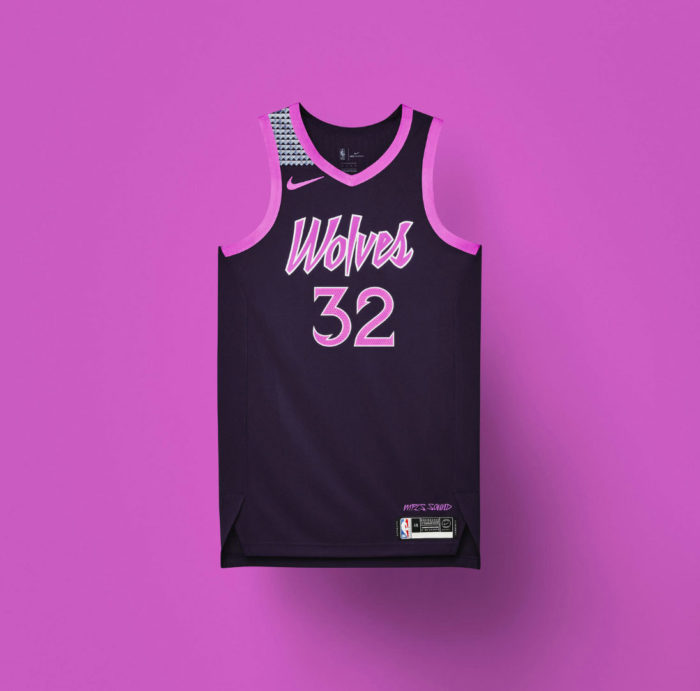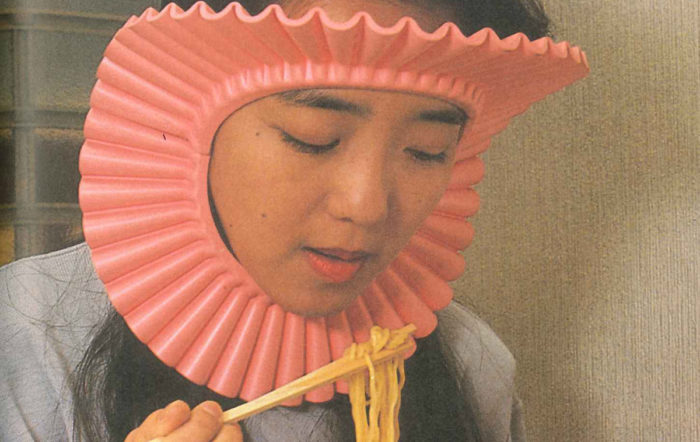I was 11 years old when Toy Story hit theaters—too old to play with toys. Even so, the movie resonated with me in a deep way. I had always imagined my toys having their own personalities, so it made total sense to me that they would have private lives and adventures of their own. The world Pixar created was just a half step sideways of the one I lived in. It felt real—and secretly, I wished it was.
This is the power of storytelling at work—this ability to create a cast of characters and a fictional world so compelling that viewers yearn to be part of it. Pixar is a modern-day storytelling master. It’s no mystery that all 21 of their movies have received both critical acclaim and box office success. Every film involves the same core elements, blended together in new and exciting ways, to draw their audience.
A few years back, the Cooper Hewitt Museum had an exhibit called Pixar: The Design of Story that gave a behind-the-scenes look at the creative company’s storytelling process. Though the exhibit has come and gone, its lessons are timeless. Here are a few of the key story design takeaways for storytellers of all kinds.
Pixar’s Story Design Philosophy
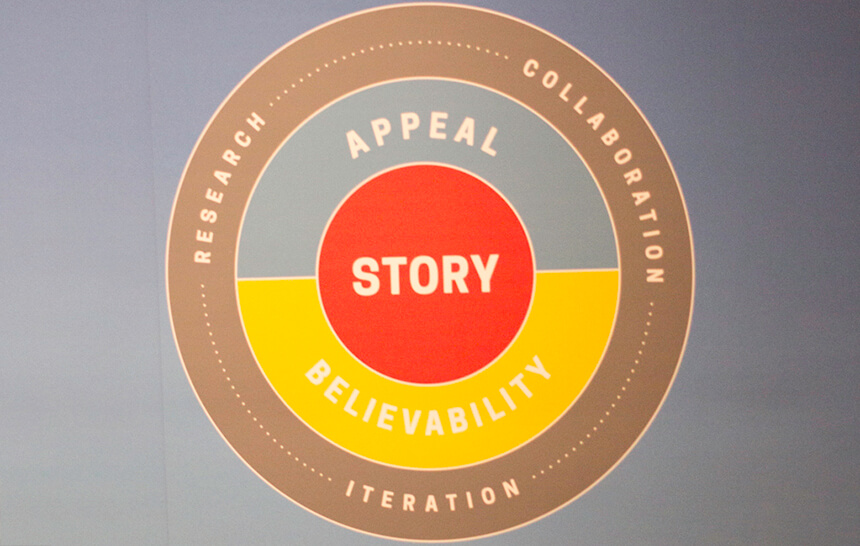
According to John Lasseter, former Chief Creative Officer at Pixar, every great story contains three foundational elements:
- Start with a compelling narrative.
- Develop memorable and appealing characters.
- Create a believable world.
To cultivate these elements, you need a continuous cycle of research, collaboration, and iteration that feeds into every part of the story design. These actions take on different forms and formats depending on the type of element and the medium you’re using to tell your story.
Let’s dive into some of the specific story design elements and tools Pixar uses that you can leverage for your own creative work.
Start with a Compelling Narrative
Pixar’s stories aren’t particularly complicated in terms of narrative structure. You can sum up each film in just a few words:
Toy Story: Misplaced toys try to make it home.
Finding Nemo: A fish goes searching for his missing son.
WALL•E: A robot follows a probe to a visiting spaceship.
Since the primary audience for Pixar films is children, the narratives must be simple and relevant for young viewers. And yet, these stories also captivate and move us as adults. They tap into deep-rooted emotions that are woven into the fabric of our human nature: love, longing, loneliness, jealousy, fear. And they treat these emotions with a great amount of subtlety and nuance, even if the stories that contain them are straightforward.
The way stories first make their way out of a writer’s brain and into a shareable format is in a script. Some scripts contain dialogue; some contain a list of actions; still others contain a visual snapshot of how the story is supposed to feel. All of these formats are extremely useful when working on visually-driven storytelling formats such as videos, comics, and interactive content.
Scripting
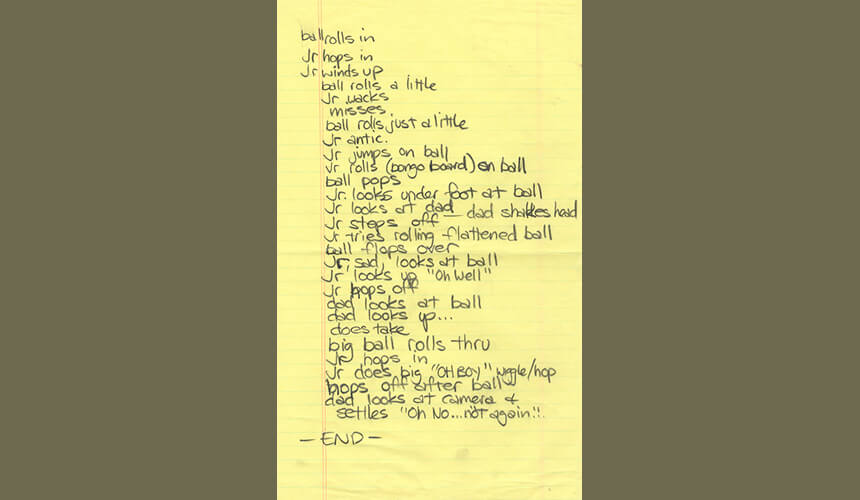
Scripts don’t need to follow a fancy format or be developed using a special kind of software. For example, John Lasseter wrote the script for Pixar’s first film, Luxo Jr., on a regular ol’ legal pad.
I love this script because it clearly conveys a story, complete with characters, a narrative arc, and an emotional journey, in just 29 lines of direction. There’s no dialogue. There’s no world-building. There’s no scene-setting. There’s just an everyday interaction between a father and son (yep, Luxo Sr. is a dad!). But when you watch the final film, it comes through just as vibrant and rich and engaging as a feature-length movie.
This is what the best narratives do: They transport you to another time and place, if only for a few minutes, and immerse you in a story that becomes real as long as you’re inside of it.
Colorscripting
A colorscript goes hand-in-hand with a written script. Its purpose is to map out the color, lighting, emotions, and moods in a film, setting the visual tone in the same way the action portions of a screenplay set the tone for the on screen blocking and dialogue.
While colorscripting isn’t necessary for every type of visual storytelling, it can be immensely helpful for any story that involves bespoke image creation.
This colorscript from the movie Up gives a clear sense of mood that a simple keyframe doesn’t. The muted palette evokes a somber feeling in the scene. Carl’s suit, the cool purples and greens of the house, even the lack of color in the balloon he’s holding, show a lack of vibrancy that mirrors Carl’s emotional state.
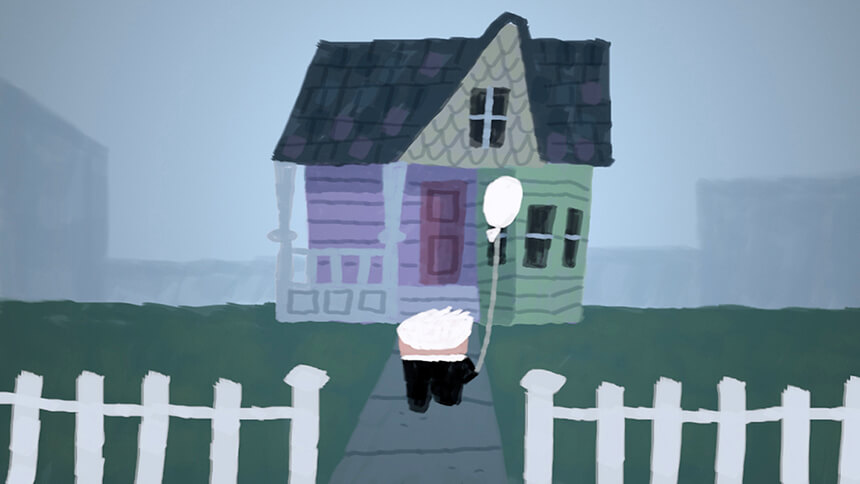
Conversely, this colorscript for Okuni, a kabuki dancer in Tokyo from Cars 2, provides a rich and vibrant overview of her character. I absolutely love the translation of human clothing to vehicular paint and parts, particularly the fan. (How does a car even hold a fan? Doesn’t matter—it’s adorable!)
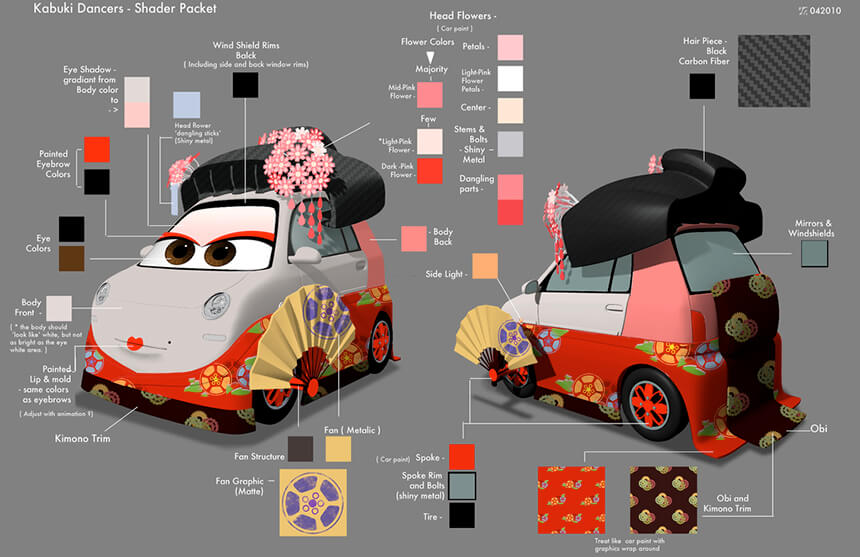
Read more about the creative process and the power of uncertainty.
Develop Memorable, Appealing Characters
Buzz and Woody. Mike and Sulley. Nemo and Dory. These characters are beloved by children and adults everywhere. After spending two hours with them, you feel like you’ve known them your entire life—and you want to keep spending time with them (hence the successful sequels).
What makes these characters so compelling? They’re memorable—not just because they’re talking toys or monsters or fish, but because they have familiar personalities that appeal to us. We all know people with aspects of Woody or Buzz. We probably have a forgetful Dory in our lives. I know I’ve run into a feisty character like Mike a few times before.
These characters are extremely tangible, multi-dimensional, and relatable. They have obvious strengths and flaws and fears, just like us. Of course we fall in love with them—even the villainous Sids and Syndromes and Chick Hicks—because we identify them with real people in our lives.
On the writing side, characters often start as a word clouds, where you get to know a half-formed personality by digging deeper into what makes them tick. On the visual side, characters often begin as concept art, a rough sketch that, after many rounds of revisions, eventually becomes the onscreen persona your illustrators and animators will bring to life.
Concept Art
Some concept art serves to show a character in various physical and emotional states, like this series of drawings for Remy of Ratatouille.
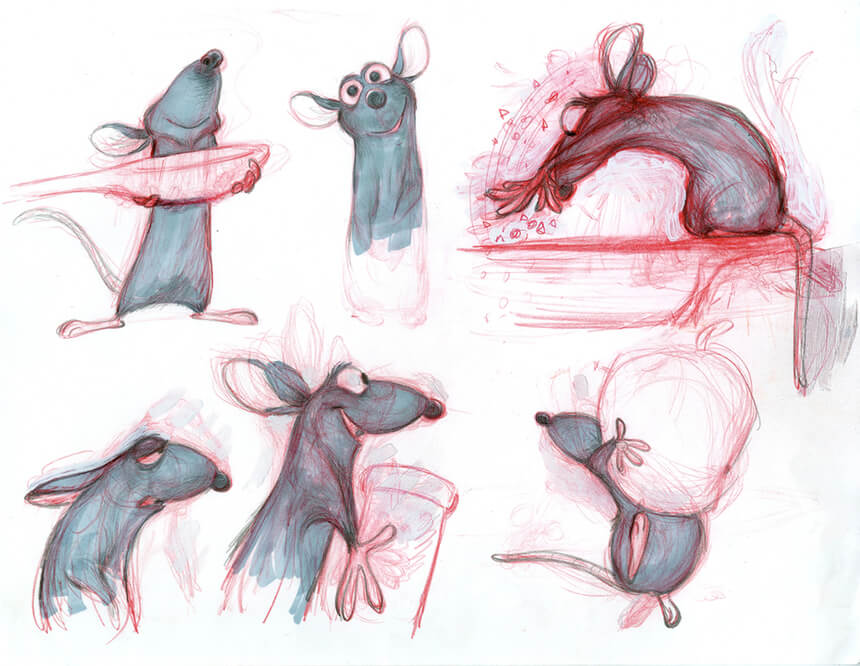
Other art goes into more detail to show clothing, features, and attitude, like this super-early concept piece for Woody of Toy Story. This version looks a lot more rough-and-tumble than Woody’s character actually ended up being.
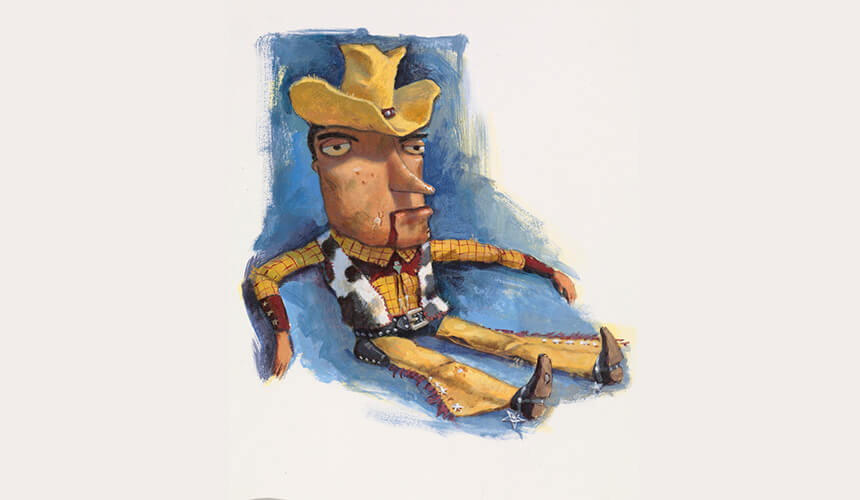
Other concept art can be more technical, modeling the anatomy or structure of a character like this schematic for WALL•E.
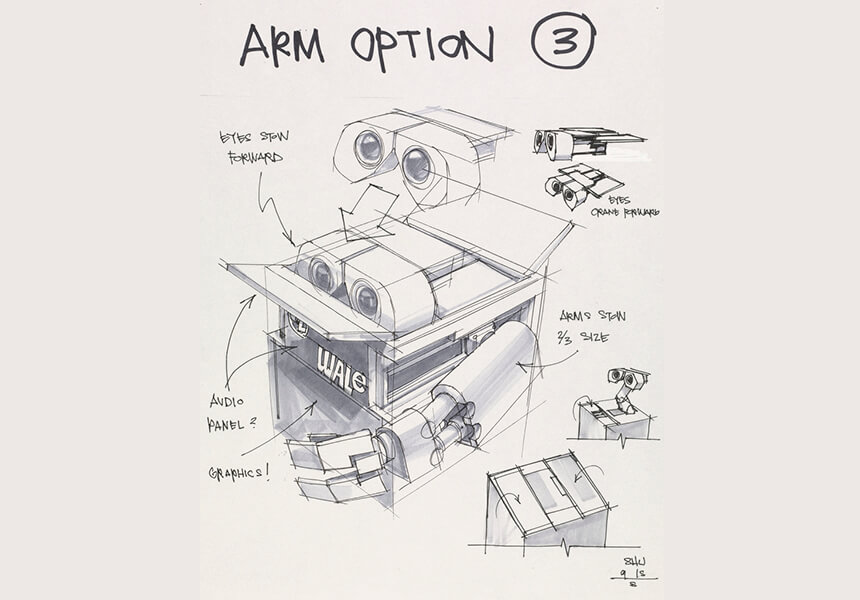
Create a Believable World
Whether you’re creating a story in a real-world setting, one in an alternate reality almost the same as ours, or an entirely unknown universe, your world has to be believable for your audience to become fully immersed. If your world is inconsistent, illogical, or ill-defined, viewers will immediately begin to remember they’re engaging with a fiction—and then the magic is lost. As storytellers, it’s our job to sustain the magic for our readers or viewers as long as possible, and world-building is one of the key ingredients in this spell.
For the most part, Pixar movies are set in worlds we can relate to, at least on some level: the suburbs, the desert, a forest, the ocean. But even the ones we’ve never visited—like Monstropolis or a huge spaceship flying around the solar system—are believable because they tie in elements from everyday life. Mike and Sulley still have to go to work like the rest of us; advertisers are still blasting messages to consumers in space; love and friendship and doing the right thing remain important, regardless of where or when the story takes place. Even if we’ve never been to these worlds, we can imagine ourselves in them without much effort.
At Pixar, world-building starts in the mind of a writer, and is eventually brought to life in collaboration with teams of illustrators, animators, and 3D modelers. Often, early visualizations are created in the form of static concepts that show how a scene or setting should look. Artists also use multi-panel storyboards to reveal how the world, characters, and narrative work together visually in specific scenes.
Visual Concepts
Real places often inspire fictional ones. This place, called Cadillac Range in Cars, was inspired by a real art installation the team saw on a road trip along Route 66 doing research for the movie. The installation featured Cadillacs with their noses buried into the ground, tail fins sticking up in the air like the mountain range does in the concept below.
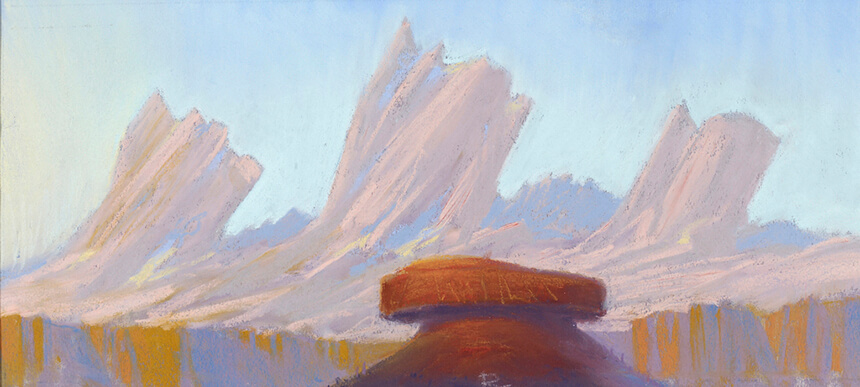
Storyboards
These storyboards from Inside Out illustrate a real-world setting—a normal house where a kid doodles on the wall and is forced to eat food she clearly despises—juxtaposed with scenes of Headquarters, where Riley spends most of the movie with her personified emotions. Both worlds feel equally real, even though Headquarters’ setting is quite fantastical.
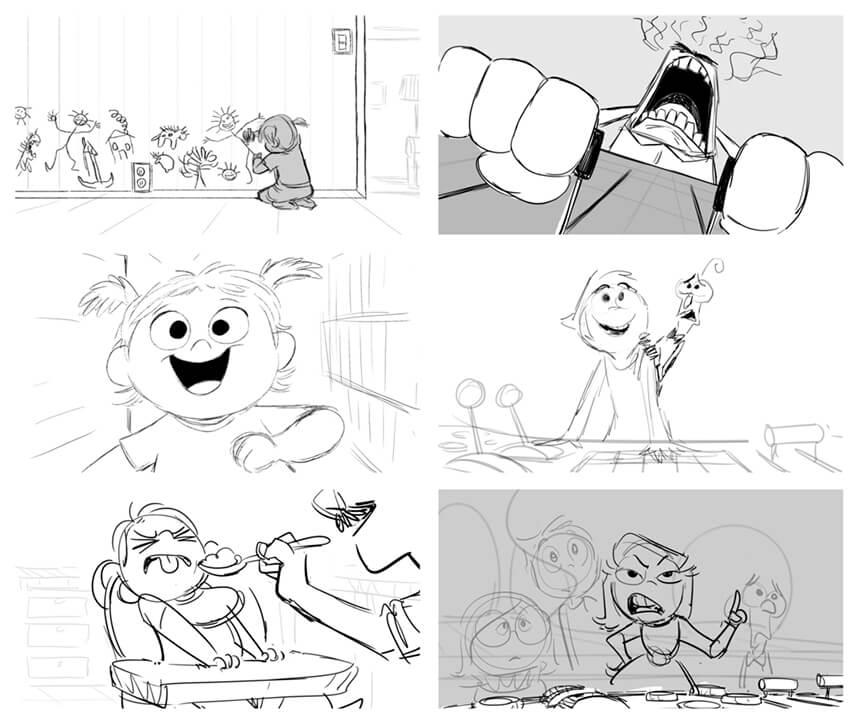
Key Story Design Takeaways
Story design requires both wordsmiths and visual artists to bring a narrative to life. Using a highly collaborative and iterative development process, along with some useful concepting and prototyping formats to get your ideas into a shareable format, you can design incredibly powerful stories.
The best stories make a lasting impact on viewers, becoming part of their imagination and broader worldview. Pixar has mastered this kind of storytelling. We can learn a lot not just from the techniques they use, but from the way they invest in developing compelling narratives, characters, and worlds.
CREDIT: All art courtesy of Pixar Animation Studios, © Disney/Pixar, on loan to Cooper Hewitt
